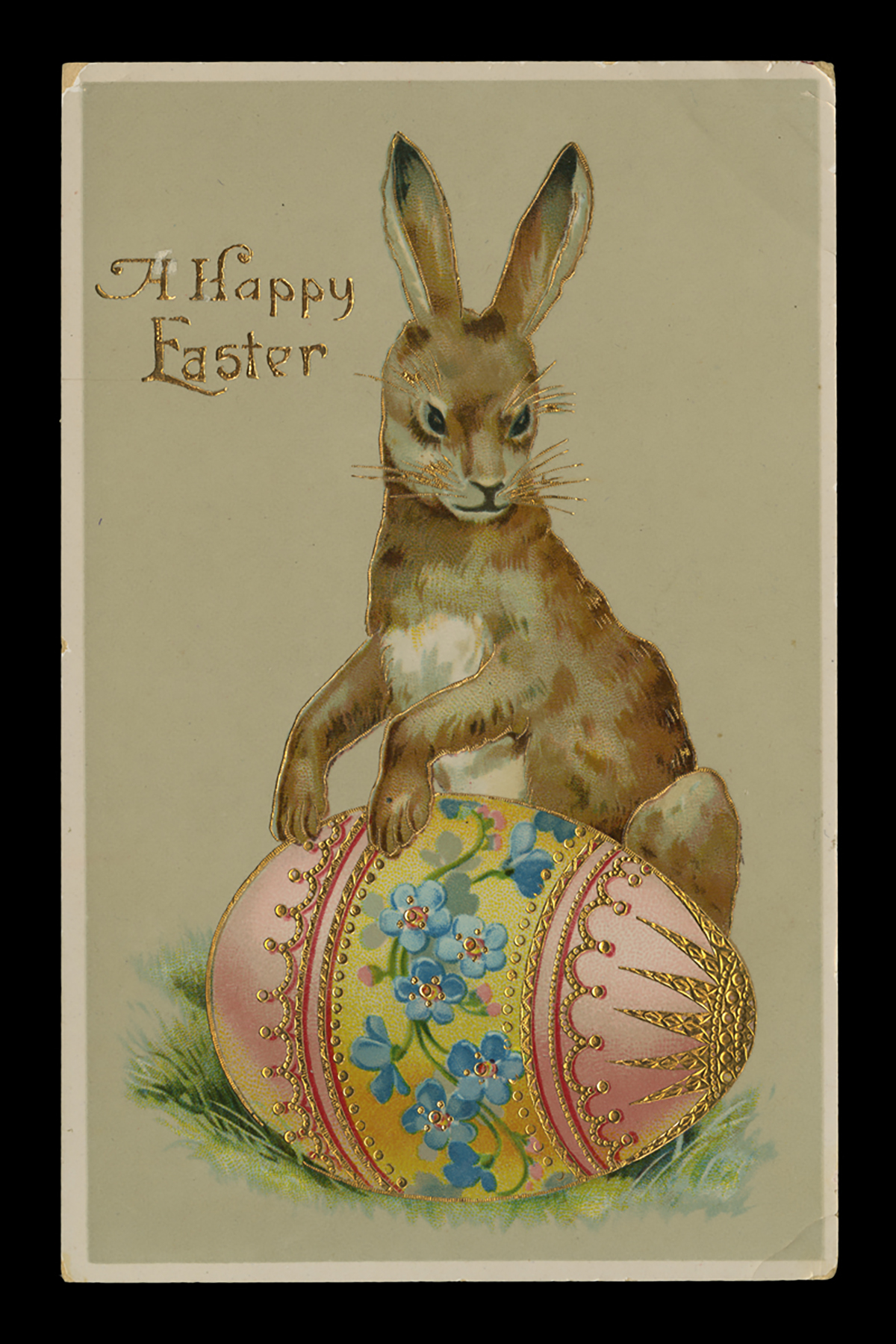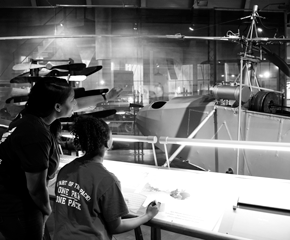The Easter Bunny's Origins in America
Spring! A time to celebrate! The season brings longer days, warmer weather, and new life. Budding flowers, baby chicks and lambs, painted eggs, and, of course, the Easter Bunny — all symbolize the return of spring and the end of dreary winter.

Easter Greeting Postcard, circa 1910 / THF113344
The Easter Bunny's ancient origins are unclear, but various cultures have long associated the amazingly reproductive rabbit (or hare) with spring and the celebration of new life. Spring is the time when hares and rabbits — hares are larger and have longer ears and hind feet — produce large litters of leverets (baby hares) or kittens (baby rabbits). This association was a small step toward a connection with spring and Easter, the Christian holiday celebrating the resurrection of Christ.
The Easter Bunny (originally known as the Easter Hare or Easter Rabbit) is believed to have originated in German folklore, which described the mythic creature bringing colorfully decorated eggs to children. Whether the Easter Bunny laid the eggs or hid them may be a matter of interpretation, especially when inquisitive children ask for explanations. Written accounts from Germany in the 1680s mention the Easter egg-laying hare, identified hundreds of years later as the Easter "Bunny." German immigrants brought the tradition to colonial America, perhaps as early as the late 1600s. A drawing by Fraktur artist Johann Conrad Gilbert (1734-1812) depicting a hare hopping along with a basket of decorated eggs provides more substantial proof of the Easter Bunny in early America. Yet, few outside the areas populated by German-speaking immigrants recognized the mythic creature. By the late 1800s, however, the Easter Bunny — like Santa Claus and the Christmas tree — was well on its way to becoming an established holiday symbol throughout America. Growing commercialization of Easter materials — greeting cards, books, toys, candies and sweets, and other material — spread the holiday celebration across cultures, establishing the mythic egg-bringer as a holiday tradition. In the early 1900s, Americans would shed the monikers, Easter Hare or Easter Rabbit, in favor of the more kid-friendly Easter Bunny.
Check out these other Spring and Easter posts found on The Henry Ford's webpages:
Resources used for this article:
- Shoemaker, Alfred L. Eastertide in Pennsylvania, a folk cultural study. Kutztown, PA: Pennsylvania Folklife Society. 1960, pp. 46-50.
- Winick, Stephen. "On the Bunny Trail: In Search of the Easter Bunny." Library of Congress Blogs: Folklife Today. American Folklife Center & Veterans History Project. March 22, 2016.
Andy Stupperich is an Associate Curator at The Henry Ford.

